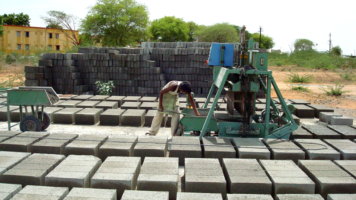INNOVATIVE BUILDING MATERIALS FOR ENERGY-EFFICIENT CONSTRUCTION
The construction industry is undergoing a profound transformation, driven by the need for sustainability and energy efficiency. Innovative building materials are at the forefront of this change, offering novel solutions that not only reduce environmental impact but also improve energy efficiency in buildings. In this article, we will explore some of the key materials and technologies that are shaping the future of energy-efficient construction.
1. Smart Insulation Materials
Traditional insulation materials like fiberglass and foam are effective at retaining heat or cold, but they have limitations when it comes to adapting to changing conditions. Smart insulation materials, such as aerogels and phase-change materials, are revolutionizing how buildings manage temperature. These materials can change their thermal properties based on the environment, ensuring that a building remains comfortable while reducing heating and cooling energy consumption.
2. High-Performance Windows
Windows are often the weakest link in a building’s energy envelope. Innovative window technologies, such as low-emissivity coatings and electrochromic glass, can significantly reduce heat loss during the winter and heat gain during the summer. These windows allow natural light to enter while blocking unwanted solar heat, decreasing the need for artificial lighting and air conditioning.
3. Photovoltaic Building Materials
The integration of solar panels into building materials is a game-changer for energy-efficient construction. Solar roof tiles, solar windows, and photovoltaic cladding allow buildings to generate their own electricity, reducing reliance on the grid and decreasing overall energy costs. These materials not only generate power but also improve a building’s aesthetics, making them more appealing for both homeowners and businesses.
4. Self-Healing Concrete
Concrete is one of the most widely used building materials, but it is susceptible to cracks and deterioration over time. Self-healing concrete incorporates bacteria or capsules filled with healing agents that can repair cracks autonomously. This technology prolongs the life of concrete structures, reduces maintenance costs, and enhances the sustainability of construction projects.
5. High-Performance Insulated Panels
Prefabricated insulated panels have gained popularity due to their high insulation values and quick installation. These panels are composed of advanced materials like structural insulated panels (SIPs) or vacuum insulated panels (VIPs), which offer superior thermal performance. Using these panels in construction can lead to well-insulated and energy-efficient buildings.
6. Green Roofing Materials
Green roofs, or vegetated roofs, provide natural insulation and reduce the urban heat island effect. These roofs incorporate a variety of innovative materials, including water-resistant membranes, drainage systems, and lightweight planting materials. They not only contribute to energy efficiency but also enhance the building’s aesthetic and provide environmental benefits.
7. Bamboo and Engineered Wood
Sustainable and renewable, bamboo and engineered wood are increasingly popular choices for construction materials. These materials offer the strength and durability of traditional wood or concrete but with a significantly lower carbon footprint. They are ideal for both structural and decorative elements in energy-efficient buildings.
8. Recycled and Recyclable Materials
A sustainable future relies on reducing waste and reusing resources. Many innovative building materials are made from recycled materials, such as recycled steel, plastic, or glass. Additionally, these materials are designed to be easily recyclable at the end of their life cycle, reducing the burden on landfills and conserving natural resources.
9. High-Performance Facade Materials
The facade of a building plays a crucial role in energy efficiency. Innovative facade materials, such as ETFE (ethylene tetrafluoroethylene) and thermally broken systems, improve insulation, minimize heat transfer, and enhance natural lighting. These materials create comfortable indoor environments while reducing energy consumption.
10. Digital Building Technologies
Incorporating digital technologies, such as Building Information Modeling (BIM) and sensors, can optimize the use of innovative materials in construction. These tools allow for precise planning and real-time monitoring of a building’s performance, ensuring that energy-efficient features are used to their full potential.
In conclusion, innovative building materials are transforming the construction industry by improving energy efficiency, reducing environmental impact, and enhancing the longevity of buildings. These materials not only benefit the planet but also provide economic advantages in the form of reduced energy costs, increased property values, and improved quality of life for building occupants. Embracing these innovative materials is essential for a sustainable and energy-efficient future in construction.


